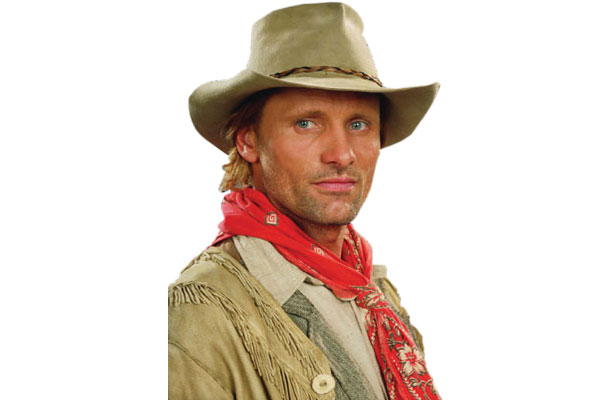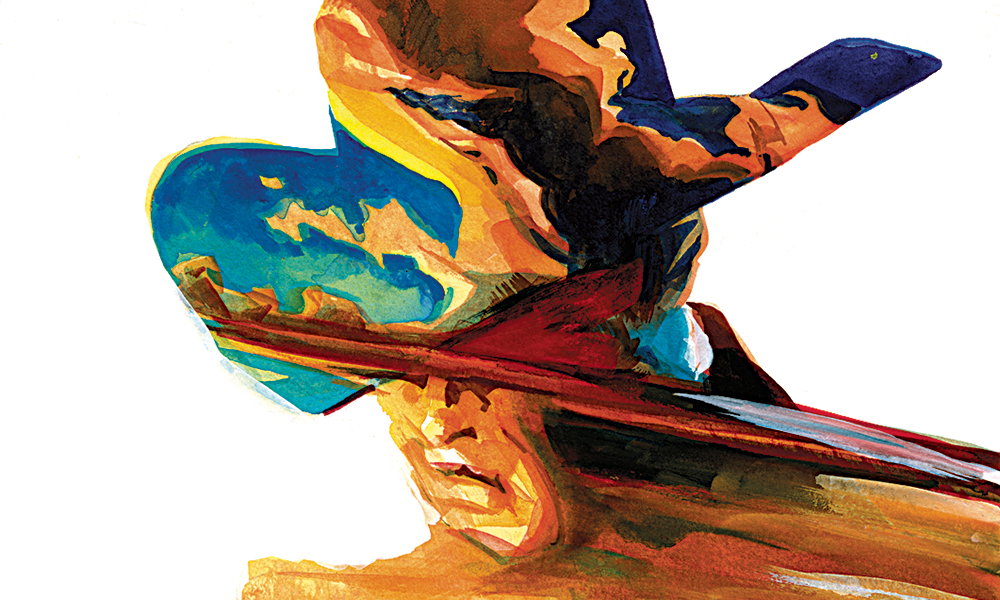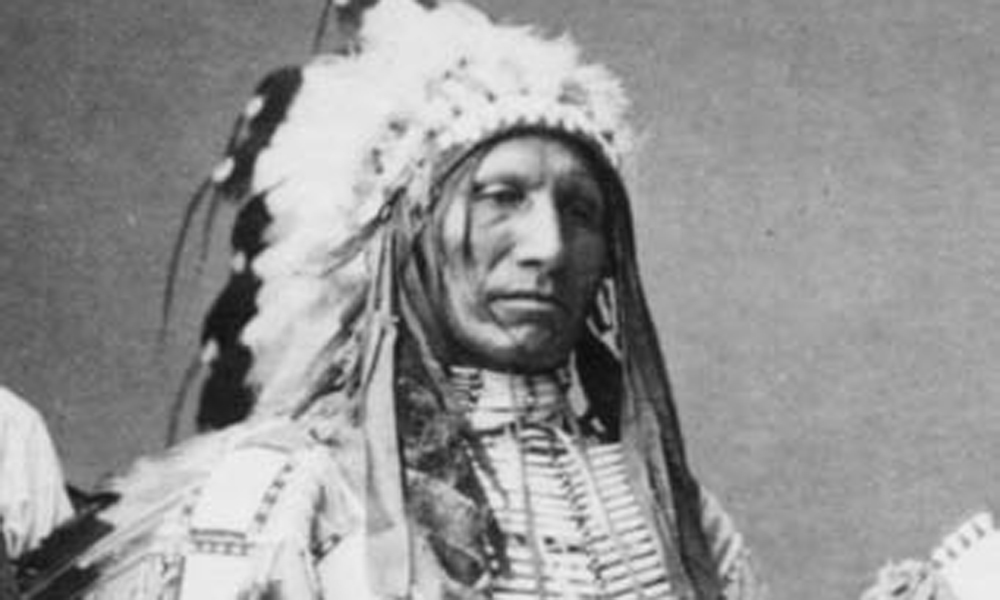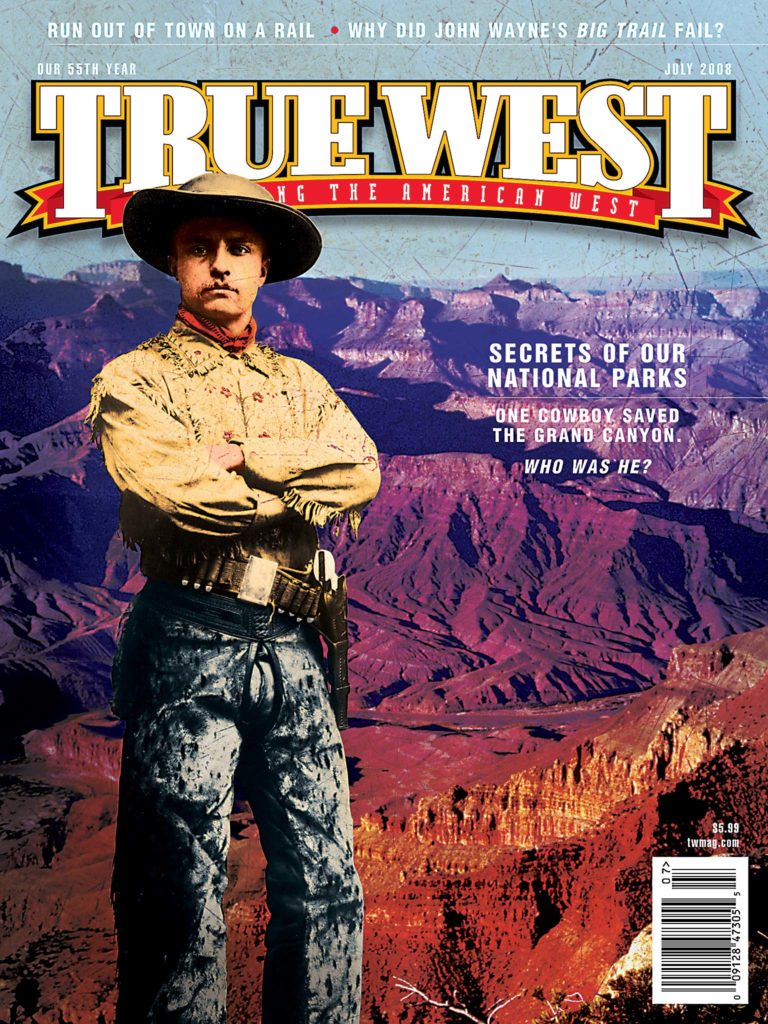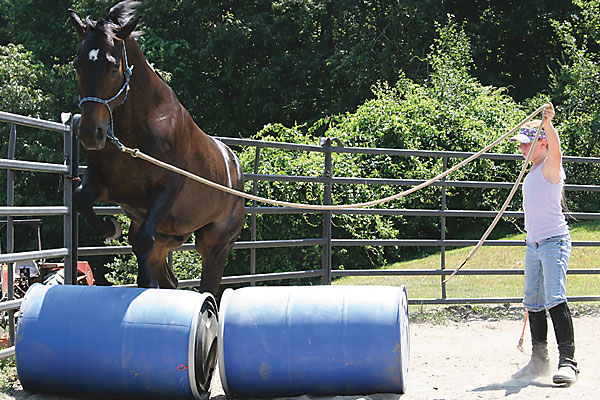
In the 17th century, New Mexico’s vaqueros imparted (under duress, most likely) their “secrets” of horsemanship to the Plains Indians.
With these secrets in hand, the Plains Indians transformed from foot soldiers and buffalo runners who drove herds over cliffs to mounted warriors and fearless buffalo chasers who killed with their arrows.
The cues they learned to get their horses “on their side” are still in practice today. People may cluck to get their horse to change gears, or they may slightly nudge their pal with their legs. Some people use more subtle cues.
I’ve met Kelly Sigler, a horse trainer who can command her horse to slow down by exhaling and to move away by jiggling the lead line. She grew up a few miles north of the famous King Ranch, in Corpus Christi, Texas, and now teaches at the Biltmore Estate Equestrian Center in Asheville, North Carolina, sharing with her students a form of natural horsemanship created by communication guru Pat Parelli.
On a recent trip to Texas, I met an equestrian who cued her horse to speed up by breathing out and slow down by stiffening up a bit in the saddle.
All of these small cues tell me just how attuned to us horses can be. As regular trail riders, how can we learn to speak horse language?
Horses may be thousand-pound animals, but they are responsive to the little movements that we execute on their backs, even with a saddle. In my hunter jumper lessons at home, I can tell my horse that we are about to turn by looking in the direction of where I want to go. Many good school horses will stop if they feel that
their rider is off balance, thus protecting the rider from falling off. Horses are amazing animals, with heightened senses.
During a week at a working ranch in Arizona, I was introduced to a horse whisperer. This is someone who has an exceptional ability, some say a gift, to communicate with horses. Could this guru help me become a better riding partner?
Standing in a round pen, I attempted to get my horse to come to me without hooking it to a lead line and pulling. I tried to telepathically will him to move my way. Perhaps I wasn’t focused enough, or I was letting a little stress from the day affect me. Horses can sense all of this. On a trail ride, if one horse and rider get stressed, the other horses and riders can become stressed as well.
As I stood in the round pen, I wondered if the people who convinced their horses to pair up with them knew some secret trick. It seemed like the horses were trained to walk to them. After a few minutes of standing still, my horse, who I had only just met that week, slowly walked over and nuzzled my back. I felt a surge of confidence and a sense that I was understanding the horse’s mentality and how I fit into his picture.
Across the nation, people offer guidance in getting better acquainted with horses. I’ve mentioned the work of Kelly Sigler in North Carolina. Her mentor, Pat Parelli, tours the country to give his take on how owners can understand what he calls the horse’s “horsenality.” He also lectures at his two centers in Pagosa Springs, Colorado, and Ocala, Florida. People like Koelle Simpson in Scottsdale, Arizona, work to help riders become leaders; Simpson does it through her training program that she calls the Gift of Equus. In Quebec, Canada, Jacques Robidas focuses on integrating wellness and centered riding into his horse approach.
While riding with Jacques, the horses and I both ate organic foods, learned to be better balanced in the saddle and worked to get into a Zen-like state. This ensured we would have a stress-free ride on the trails. Jacques and many other communicators feel that horses are our mirrors; they react the way we show them how to act.
Many people subscribe to different ideas about the best way to train horses. My travels have taught me that everyone can learn something from each other. As I strive to understand horses more, I’m also achieving a better understanding of myself.


